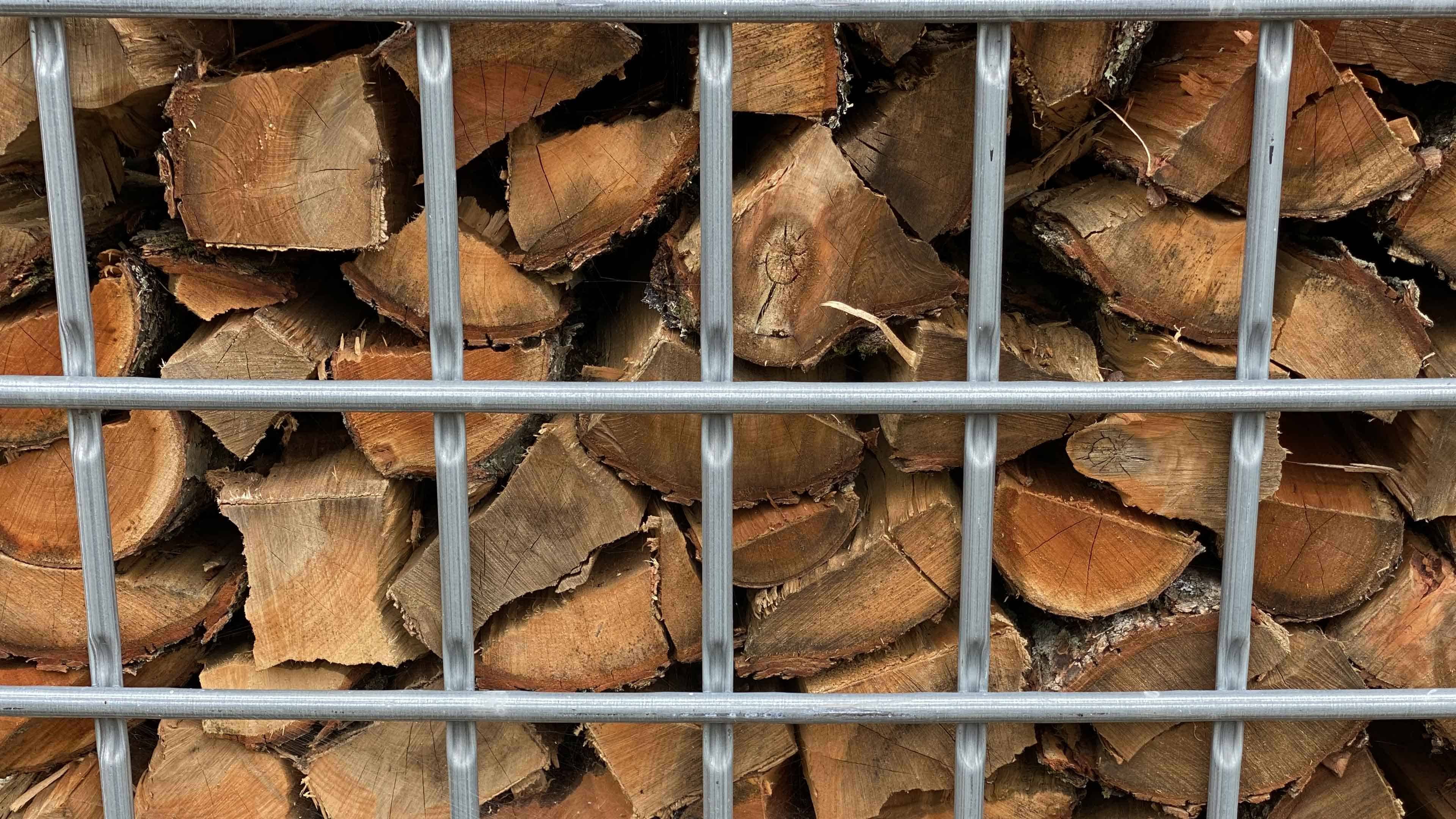Whether you’re using firewood to heat your house or for a backyard fire pit, it’s always good to know how to store it. Luckily, it’s one of Mike Morgan’s favorite things to talk about! In this Backyard Life video, the host of YouTube’s Outdoors With The Morgans shares the best ways to store firewood.
How Not To Store Firewood
Pointing to a huge pile of wood on his property, Morgan starts the video off by saying this definitely isn’t the best way to store firewood. The reason? The wood in the center of the pile doesn’t dry well. It’s not getting good airflow or sunlight and won’t season while buried at the bottom. So why does Morgan have this big pile? It’s his overflow stack that he sells later.
To make things easier on himself, Morgan has a log splitter set up at the bottom of the pile. This is next to a conveyor belt that quickly transfers the chopped wood to the top. However, to help the buried pieces of wood dry, Morgan periodically uses his tractor to stir up the pile by moving logs from the center out to the sides. Ultimately, he says, the best solution is to get this firewood to customers early. Then they can stack it where it can get the best airflow—possibly on their own DIY firewood rack—and finish off the seasoning so they have some nice, dry firewood.

The Best Outdoor Firewood Storage Ideas
Aside from the firewood pile, Morgan outlines three better ways to store firewood:
- Use an IBC metal tote. These totes are designed to hold a large water tank—but they also make for great firewood storage. The only catch is that once you’ve stacked your firewood inside the tote, you’ll need access to a tractor or skid loader to move it around. (Fully loaded, it can weigh up to 1,600 pounds!) The wood first gets cut, split, and stacked. Then, the open grid design of the totes allows for easy airflow. Morgan says you can usually source these totes locally. And, because the totes are originally designed to hold water, they may come with a plastic tank inside, which you can cut in half to use as a roof over the firewood. For easier access to firewood, Morgan takes a grinder and cuts a section out on one side of the tote, making getting wood in and out a breeze.
- Build a woodshed. Morgan states the best place to store firewood is under the cover of a woodshed. The key to a good woodshed, he says, is to make sure it’s not all sealed up—there still needs to be good airflow to help with the drying process. To achieve this, he left openings between the roof, the frame, and all of the siding boards. Although it’s the best solution, the wood in the center still will take some time to dry when packed full. And, the only other downside is that you’ll likely have to put some in there by hand. It might be a whole lot of work, but Morgan says the reward is well worth it.
- Make a single stack. Lastly, if you don’t have a big supply of seasoned firewood and you want it to dry as quick as possible, a single stack of firewood left in the sun works wonders. Although Morgan’s native West Virginia tends to receive a lot of rain, he leaves his firewood uncovered until about a month before he’s going to use it. A lot of people will opt to put a tarp over the whole stack to protect it from the elements, but that actually keeps moisture in. Ideally, Morgan suggests putting a tarp just over the top and leaving the sides open for airflow. If rain comes, don’t worry! When the sun peeks out any surface moisture will evaporate quickly.



